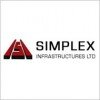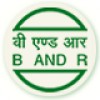Filter interviews by
Bridge & Roof Co Safety Officer Interview Questions and Answers
6 Interview questions
JHA stands for Job Hazard Analysis, which is a process used to identify and mitigate potential hazards in the workplace. HIRA stands for Hazard Identification and Risk Assessment, which is a systematic approach to identifying hazards and assessing risks associated with them.
JHA is a detailed process that involves breaking down a job into specific tasks, identifying potential hazards associated with each task, and ...
Safety policy is a set of rules and guidelines that ensure the safety of employees and the workplace.
Safety policy outlines the responsibilities of employees and management in maintaining a safe work environment.
It includes procedures for identifying and reporting hazards, as well as measures for preventing accidents and injuries.
Safety policy also covers emergency response plans and training programs for employee...
Tool box talk is a safety meeting held before starting a job to discuss potential hazards and safety measures.
Tool box talk is a short meeting held before starting a job
It is used to discuss potential hazards and safety measures
It is usually led by a supervisor or safety officer
Topics can include proper use of tools and equipment, emergency procedures, and personal protective equipment
Examples of tool box talk inc...
An induction programme is a process of introducing new employees to the organization and their roles.
It is designed to familiarize new employees with the company culture, policies, and procedures.
It may include training on safety procedures, job-specific tasks, and company values.
It helps new employees feel welcome and comfortable in their new work environment.
It can also help reduce turnover rates and increase pr...
MSDS stands for Material Safety Data Sheet. They are necessary for providing information about hazardous chemicals.
MSDS provides information about the physical and chemical properties of a substance
It also includes information about potential health hazards and safety precautions
MSDS is required by law for all hazardous chemicals in the workplace
It helps workers and emergency responders to handle hazardous materia...
JSA and JHA are both safety procedures used in workplaces, but JHA is more comprehensive and includes hazard identification and risk assessment.
JSA stands for Job Safety Analysis and focuses on identifying potential hazards and developing controls to mitigate them for a specific job or task.
JHA stands for Job Hazard Analysis and is a more comprehensive process that includes hazard identification, risk assessment, ...
Bridge & Roof Co Safety Officer Interview Experiences
3 interviews found
I applied via Shine and was interviewed in Apr 2024. There was 1 interview round.
(1 Question)
- Q1. What is jha and hira
- Ans.
JHA stands for Job Hazard Analysis, which is a process used to identify and mitigate potential hazards in the workplace. HIRA stands for Hazard Identification and Risk Assessment, which is a systematic approach to identifying hazards and assessing risks associated with them.
JHA is a detailed process that involves breaking down a job into specific tasks, identifying potential hazards associated with each task, and imple...
Interview Preparation Tips
I applied via Recruitment Consulltant and was interviewed in Jan 2022. There was 1 interview round.
(7 Questions)
- Q1. Tell me about yourself.
- Q2. What different between JSA and JHA
- Ans.
JSA and JHA are both safety procedures used in workplaces, but JHA is more comprehensive and includes hazard identification and risk assessment.
JSA stands for Job Safety Analysis and focuses on identifying potential hazards and developing controls to mitigate them for a specific job or task.
JHA stands for Job Hazard Analysis and is a more comprehensive process that includes hazard identification, risk assessment, and t...
- Q3. What is tool box talk
- Ans.
Tool box talk is a safety meeting held before starting a job to discuss potential hazards and safety measures.
Tool box talk is a short meeting held before starting a job
It is used to discuss potential hazards and safety measures
It is usually led by a supervisor or safety officer
Topics can include proper use of tools and equipment, emergency procedures, and personal protective equipment
Examples of tool box talk include ...
- Q4. What is MSDS and why they necessary
- Ans.
MSDS stands for Material Safety Data Sheet. They are necessary for providing information about hazardous chemicals.
MSDS provides information about the physical and chemical properties of a substance
It also includes information about potential health hazards and safety precautions
MSDS is required by law for all hazardous chemicals in the workplace
It helps workers and emergency responders to handle hazardous materials sa...
- Q5. What
- Q6. What is induction programme
- Ans.
An induction programme is a process of introducing new employees to the organization and their roles.
It is designed to familiarize new employees with the company culture, policies, and procedures.
It may include training on safety procedures, job-specific tasks, and company values.
It helps new employees feel welcome and comfortable in their new work environment.
It can also help reduce turnover rates and increase product...
- Q7. What is HIRA and why following
Interview Preparation Tips
I applied via Referral and was interviewed before Apr 2021. There were 3 interview rounds.

What is importance of Safety in industry ?.
(1 Question)
- Q1. What is Safety policy?.
- Ans.
Safety policy is a set of rules and guidelines that ensure the safety of employees and the workplace.
Safety policy outlines the responsibilities of employees and management in maintaining a safe work environment.
It includes procedures for identifying and reporting hazards, as well as measures for preventing accidents and injuries.
Safety policy also covers emergency response plans and training programs for employees.
Exa...
Interview Preparation Tips
- Factory Act
- Safety Officer Activities
Top trending discussions






Interview questions from similar companies

I applied via Company Website and was interviewed before Apr 2021. There were 7 interview rounds.
Accident, incident
Any hazardous
Any near miss
HIRA
Interview Preparation Tips
- Diploma Fire and Safety

I appeared for an interview in Jan 2025.
(2 Questions)
- Q1. What is hira ?
- Ans.
HIRA stands for Hazard Identification and Risk Assessment. It is a systematic process used to identify potential hazards and analyze the associated risks in a workplace.
HIRA involves identifying hazards that could cause harm, assessing the risks associated with those hazards, and implementing control measures to mitigate the risks.
It helps in creating a safer work environment by proactively addressing potential risks b...
- Q2. What is ua/uc.
- Ans.
UA/UC stands for Unsafe Acts/Unsafe Conditions, which are factors that contribute to accidents in the workplace.
UA refers to actions taken by individuals that are unsafe, such as not wearing proper protective equipment.
UC refers to conditions in the workplace that are unsafe, such as faulty equipment or inadequate lighting.
Identifying and addressing UA/UC is crucial in preventing accidents and promoting a safe work env...
(2 Questions)
- Q1. What is jsa. & LOTo system.
- Ans.
JSA stands for Job Safety Analysis, a process of identifying potential hazards in a job task. LOTO system stands for Lockout/Tagout, a safety procedure to ensure dangerous machines are properly shut off and not started up again prior to the completion of maintenance or servicing work.
JSA involves breaking down a job task into steps, identifying potential hazards at each step, and implementing controls to mitigate the r...
- Q2. What is material handling.How many types of Material handing.
- Ans.
Material handling refers to the movement, control, and protection of materials throughout the manufacturing, warehousing, distribution, consumption, and disposal processes.
Material handling involves the movement of raw materials, work in progress, and finished goods within a facility or between different locations.
There are four main types of material handling: manual, semi-automated, automated, and mechanized.
Examples...
Interview Preparation Tips

(2 Questions)
- Q1. Tell me about yourself.
- Q2. What are your strengths and weaknesses?

I applied via Approached by Company and was interviewed in Nov 2024. There were 2 interview rounds.
(3 Questions)
- Q1. What is safety and how does it relate to hazards?
- Ans.
Safety is the state of being free from harm or danger, while hazards are potential sources of harm or danger.
Safety refers to the measures taken to prevent accidents, injuries, or illnesses in the workplace or any environment.
Hazards are potential sources of harm or danger that can cause accidents, injuries, or illnesses.
Safety measures are implemented to identify, assess, and control hazards to minimize risks and ensu...
- Q2. What are the role and responsibilities of HSE officer
- Ans.
HSE officers are responsible for ensuring health, safety, and environmental regulations are followed in the workplace.
Developing and implementing health and safety policies
Conducting regular inspections and risk assessments
Training employees on safety procedures
Investigating accidents and incidents
Ensuring compliance with local, state, and federal regulations
- Q3. What do you mean by Hira
- Ans.
HIRA stands for Hazard Identification and Risk Assessment. It is a systematic process for identifying potential hazards and evaluating the associated risks.
HIRA involves identifying hazards in the workplace or environment.
It includes assessing the risks associated with each hazard.
The goal of HIRA is to implement control measures to mitigate or eliminate the identified risks.
Examples of hazards include chemical exposur...
(1 Question)
- Q1. What is the definition of safety and how does it relate to hazards?
- Ans.
Safety is the state of being free from harm or danger, while hazards are potential sources of harm or danger.
Safety refers to the condition of being protected from harm or danger
Hazards are potential sources of harm or danger that can cause accidents or injuries
Safety measures are put in place to mitigate or eliminate hazards
Examples of hazards include slippery floors, exposed electrical wires, and toxic chemicals
Interview Preparation Tips

I applied via Job Fair and was interviewed in Jun 2024. There were 2 interview rounds.
(3 Questions)
- Q1. Work at height hazards?
- Ans.
Work at height hazards include falls, falling objects, unstable surfaces, and improper use of equipment.
Ensure proper training and use of fall protection equipment
Inspect equipment regularly for wear and tear
Secure tools and materials to prevent falling objects
Avoid working on unstable surfaces or in adverse weather conditions
- Q2. Why is work at height 1.8 meters?
- Ans.
Work at height of 1.8 meters is considered a significant risk level for falls in the workplace.
Work at height of 1.8 meters is a common threshold for implementing fall protection measures.
At this height, the risk of serious injury or fatality from a fall increases significantly.
Regulations and standards often specify 1.8 meters as the height at which fall protection is required.
Factors such as surface conditions, tasks...
- Q3. What Is Work At Height Hazards And Precautions?
- Ans.
Work at height hazards include falls, falling objects, unstable surfaces. Precautions include proper training, use of fall protection equipment, regular inspections.
Identify potential hazards before starting work at height
Ensure workers are properly trained on safe work practices
Use appropriate fall protection equipment such as harnesses, guardrails, and safety nets
Regularly inspect equipment and work areas for any def...
(2 Questions)
- Q1. What is the lifting hazard?
- Ans.
Lifting hazard refers to the risk of injury or strain when lifting heavy objects or lifting improperly.
Lifting heavy objects without proper technique can lead to back injuries
Repetitive lifting without breaks can cause muscle strain
Not using proper lifting equipment can increase the risk of accidents
Improperly lifting objects that are too heavy for one person to handle
- Q2. What is crane hazard?
- Ans.
Crane hazard refers to the potential dangers associated with the operation of cranes on a worksite.
Crane collapse due to overloading or improper setup
Striking nearby objects or workers
Electrocution from contact with power lines
Falling objects from the crane
Inadequate training or supervision of crane operators
Interview Preparation Tips
- 3.8 years

Interview Questionnaire
3 Questions
- Q1. What is safety
- Ans.
Safety is the practice of preventing accidents, injuries, and harm to people, property, and the environment.
Safety involves identifying and assessing potential hazards and implementing measures to control or eliminate them.
It includes promoting awareness and education about safety procedures and protocols.
Safety also involves enforcing regulations and standards to ensure compliance.
Examples of safety measures include w...
- Q2. What is hazard
- Ans.
A hazard is a potential source of harm or danger that can cause injury, illness, or damage to property.
A hazard can be a physical, chemical, biological, or ergonomic factor that has the potential to cause harm.
Examples of hazards include slippery floors, toxic chemicals, infectious diseases, and repetitive motion injuries.
Hazards can be present in various environments such as workplaces, homes, and public spaces.
Identi...
- Q3. What is fire
- Ans.
Fire is a chemical reaction that releases heat, light, and various gases.
Fire is a rapid oxidation process that occurs when fuel, heat, and oxygen are present.
It can be classified into different types based on the fuel source, such as Class A, B, C, D, and K fires.
Fire can cause property damage, injuries, and fatalities if not controlled properly.
Prevention measures include proper storage of flammable materials, regula...
Interview Preparation Tips

(1 Question)
- Q1. Simple questions about construction safety
Bridge & Roof Co Interview FAQs
Tell us how to improve this page.
Bridge & Roof Co Interviews By Designations
- Bridge & Roof Co Safety Officer Interview Questions
- Bridge & Roof Co Scaffolding Inspector Interview Questions
- Bridge & Roof Co Planning Engineer Interview Questions
- Bridge & Roof Co Electrical Engineer Interview Questions
- Bridge & Roof Co Diploma Electrical Engineer Interview Questions
- Bridge & Roof Co Assistant Construction Manager Interview Questions
- Bridge & Roof Co Safety Officer/Manager Interview Questions
- Bridge & Roof Co QA QC Engineer Interview Questions
- Show more
Interview Questions for Popular Designations
Overall Interview Experience Rating
based on 1 interview experience
Difficulty level
Duration
Safety Officer Interview Questions from Similar Companies
Bridge & Roof Co Safety Officer Reviews and Ratings
based on 29 reviews
Rating in categories
|
Civil Site Engineer
151
salaries
| ₹1.7 L/yr - ₹5.1 L/yr |
|
Site Engineer
147
salaries
| ₹1.8 L/yr - ₹6 L/yr |
|
Safety Officer
145
salaries
| ₹2 L/yr - ₹7.5 L/yr |
|
Piping Engineer
89
salaries
| ₹2 L/yr - ₹8.4 L/yr |
|
Safety Supervisor
68
salaries
| ₹1.6 L/yr - ₹4.2 L/yr |

L&T Construction

Simplex Infrastructures

L&T Energy Hydrocarbon

AECOM
- Home >
- Interviews >
- Bridge & Roof Co Interview Questions














